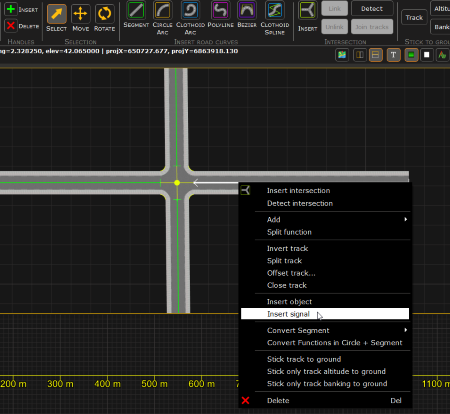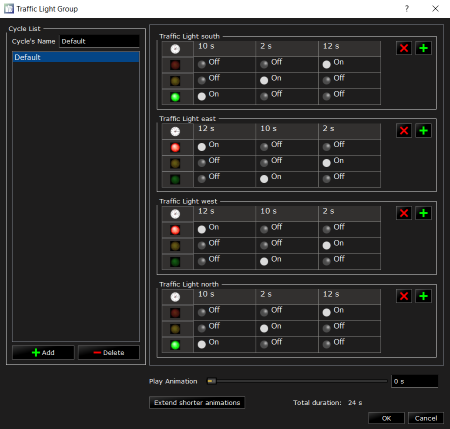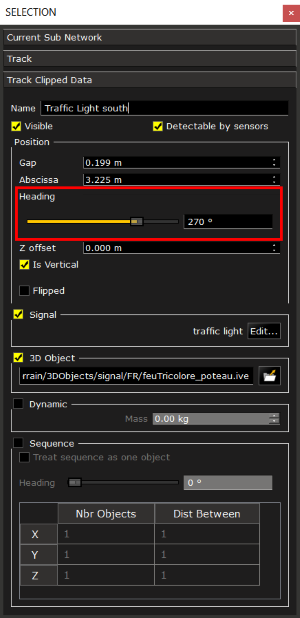How to create a road network from scratch
In SCANeR, a simulation is composed of actors performing actions according to a scenario that has been created by the user. This scenario takes place in an environement we call the terrain. SCANeR comes loaded with default environments you can use for your simulations, but you can also use the TERRAIN mode to design your own.
Note: If you already have your own environments, you can import them into SCANeR, or we can help you to replicate them as a service on demand. We also offer off-the-shelf complete and realistic environments such as the N118 around Paris or the Europe 2.0 environment. More information on: https://www.avsimulation.com/content-creation/.
A terrain is composed of road logical content, used by the actors to make their own decisions (thanks to SCANeR Traffic A.I.), and of a 3D representation of the roads, intersections and decorative elements.
In this guide, I will explain how to create a new environment composed of a simple intersection with traffic lights, to be used in your custom simulation.
- Step 1. Start TERRAIN mode and create a new
terrain - Step 2. Create the road network
- Step 3. Export the 3D
After following these simple steps, you will be able to create any terrain you want, and enhance your experiments 😉.
Let’s jump into the guide!
Step 1. Start TERRAIN mode and create a new terrain file
-
When you start SCANeR, it will start in
SIMULATIONmode by default. To switch to theTERRAINmode, just click on theTERRAINbutton in the top menu. A separate GUI will open, showing theTERRAINmode UI.
-
Once TERRAIN mode is loaded you will see a toolbar, which has the
Hometab selected by default. You can click theNewbutton to open a new terrain project.
Step 2. Create the road network and the 3D representation
- Click on the
Roadstab to bring up the menu for inserting segments. Here you can click on any of the buttons in theInsert Road Curvessub-menu to select the road type, and then drag your mouse in the editor to lay down a segment. If you create two intersecting segments, theDetectbutton in theIntersectionsub-menu becomes available. Click this button to create an intersection at the point where the two segments cross.
Note: SCANeR veterans will recall it was necessary to enable to
Intersection 3D Generationlayer to see an intersection. New in version 2023, this layer is enabled by default while in theRoadstab.
-
In this step we will add realism to the terrain we just created by adding traffic lights. Using the
Selecttool, left click the axis a road(in this case the green line) to select it, then right click to bring up the menu. ClickInsert Signalto open theEdit Signalsmenu.
In this menu, first select
Traffic Lightto start editing your signal. At the bottom of theSignal Optionssection, click the drop down menu in theTraffic Light Group, and add a name for your group. This group will be associated with all of the signals in this intersection to ensure their animation and logical instructions for traffic are in sync.
Click
OKwhen you are done configuring and you will see the traffic light has been placed on the track. Now you just have drag and drop it on the right spot on the sidewalk. Repeat this step for as many traffic lights as you want in your Terrain. I recommend four, one for each road in your intersection. Be sure to add them all to the same animation group!Tip: it’s always a good idea to give your signals a name which clearly denotes their location or purpose. Here, I will attach cardinal directions to my traffic light names to easily understand where they are on my intersection. This will help me when editing the signal animations in the next step
-
Now let’s synchronize our Traffic Lights. Double click on one of your trafic lights to open the menu, and then click the
Editbutton in theAnimationsection. A new GUI appears where you can configure the color of your lights and the amount of time between every step. Click the cells with lights in them to change thei state betweenon,off, orblink. Change the time each state is active by clicking on the time at the top of the light’s table. In my case, I want the east and west groups to be in sync with each other, and the north and south lights will have a corresponding pattern. You can use the slider at the bottom to preview the animation and confirm the state of each light at specific points in your cycle.

Step 3. Export the 3D
-
In order to see the environment in a simulation, we need to generate the 3D file which represents it. But first, let’s make sure our traffic lights are oriented correctly. You can switch to the
Free Perspective Viewby clicking on theCamerabutton on the top right corner and by selectingFree Perspective View. You can also use the keyboard shortcut, in this caseP.
You can now see how the traffic lights are oriented and correct them if needed. To correct the orientation just select the Traffic Light and in the
SELECTIONwindow search forHeading. You can use the slider to see the orientation or type in the angle in degress.
Tip: When changing camera views, the camera will zoom out and capture the whole network. If you wan to focus on a certain area or object, select it just before changing views. The new view will focus on the selected object so you dont have to search for it. Also, you can hold
alt+middle clickwhile moving your mouse to rotate the camera around a selected object.
-
Once the 3D representation is correct, we need to generate the 3D file. First, save the terrain you just created by clicking on
Saveicon at the top. If this is the first time saving a terrain, you will be prompted to give it a name. Then click onFile\Export 3D Visualto start the 3D generation. Choose the location and the name of the file. An interface will appear allowing you to choose the objects you want to export. Simply check the objects you want in the 3D and uncheck those not needed.
Note: In this menu, be sure NOT to check the box for
3D Objects. In the simulation, 3D Objects are handled by a different module, and exporting them in the Terrain will cause them to duplicate and overlap.
Congratulations, you have created your own terrain! Well done! 👍